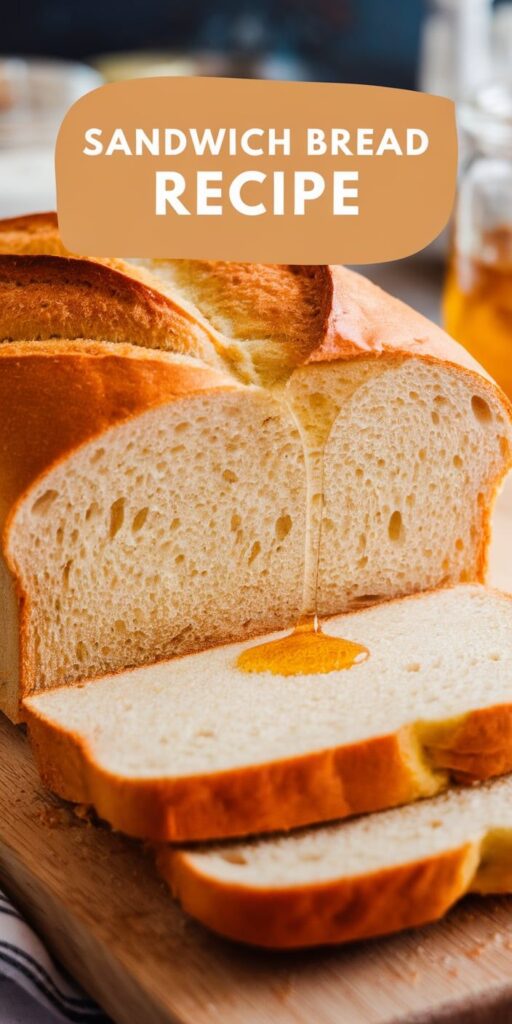I’m excited to share my favorite homemade sandwich bread recipe that will transform your kitchen into a bakery. Making your own easy bread recipe isn’t just about saving money—it’s about creating something magical with just a few simple ingredients.
Every home baker knows the incredible satisfaction of pulling a fresh loaf of homemade sandwich bread from the oven. The warm, comforting aroma fills your kitchen and promises something truly delicious. This recipe is perfect for anyone wanting to explore the world of bread making, whether you’re a beginner or an experienced cook.
Bread making might seem intimidating, but I promise it’s simpler than you think. With just a few basic ingredients and some patience, you’ll create a soft, fluffy loaf that puts store-bought bread to shame. My easy bread recipe will guide you through each step, ensuring success every time.
Get ready to discover how rewarding and delicious homemade sandwich bread can be. Let’s start this delicious journey together!

Why Making Your Own Sandwich Bread Will Change Your Life
Baking bread at home is more than just a cooking activity—it’s a transformative experience that can dramatically improve your health, wallet, and overall happiness. The benefits of homemade bread extend far beyond what you might find in store-bought loaves.
Nutritional Power of Fresh-Baked Bread
When you make bread in your kitchen, you gain complete control over ingredients. Store-bought breads often contain preservatives and unnecessary additives. My homemade bread recipe ensures:
- Zero artificial preservatives
- Reduced sodium content
- Higher nutritional value
- Customizable ingredient options
Saving Money with Homemade Bread
Creating fresh-baked bread at home can significantly cut your grocery expenses. Let’s break down the cost comparison:
- Average store-bought loaf: $3-$5
- Homemade bread cost: Around $1-$2 per loaf
- Potential monthly savings: $12-$36
The Intangible Joys of Baking
Beyond health and financial benefits, making bread offers emotional rewards. The warm aroma filling your kitchen, the satisfaction of creating something from scratch, and the pride of serving a fresh-baked loaf to your family are priceless experiences that no store-bought bread can replicate.
Essential Ingredients for the Perfect Sandwich Bread Recipe
Creating delicious homemade sandwich bread starts with understanding the key bread ingredients that transform simple components into a magical loaf. Selecting the right flour types for bread can make all the difference in your baking adventure.
Let’s explore the fundamental ingredients that will elevate your bread-making skills and create a mouth-watering sandwich loaf from scratch.
Types of Flour and Their Effects
Choosing the right flour is crucial for sandwich bread success. Different flour types for bread offer unique characteristics:
- All-Purpose Flour: Versatile and reliable, perfect for beginners
- Bread Flour: High protein content creates chewier texture
- Whole Wheat Flour: Adds nutritional value and nutty flavor
The Role of Yeast and Sugar
Yeast is the magical ingredient that makes bread rise. When combined with sugar, it creates a powerful fermentation process. The sugar feeds the yeast, helping it activate and create those delightful air pockets that give bread its soft, fluffy texture.
Understanding Salt and Fat Content
Salt isn’t just about flavor – it strengthens gluten and controls yeast growth. Fat, whether from butter or oil, contributes to the bread’s moisture and tender crumb. These bread ingredients work together to create a perfect balance of taste and texture.
By carefully selecting and combining these ingredients, you’ll transform simple components into a spectacular homemade sandwich bread that beats any store-bought loaf.
Kitchen Tools and Equipment You’ll Need
Preparing to bake sandwich bread requires some essential bread baking equipment that will make your bread-making journey smooth and enjoyable. I’ll walk you through the key tools for making bread that will transform your kitchen into a bakery paradise.
Let’s start with the must-have bread baking equipment for your sandwich bread adventure:
- Large mixing bowl (glass or stainless steel)
- Measuring cups and spoons
- 9×5 inch loaf pan
- Kitchen scale (for precise measurements)
- Wooden spoon or spatula
- Clean kitchen towel
While these basic tools for making bread are crucial, some optional equipment can elevate your baking experience. A stand mixer with a dough hook attachment can significantly reduce kneading time and effort. A digital instant-read thermometer helps ensure your yeast activates at the perfect temperature.
For serious bread enthusiasts, consider investing in additional tools like a bench scraper, proofing basket, and digital kitchen scale. These specialized bread baking equipment pieces can help you achieve professional-quality results right in your home kitchen.
Don’t worry if you don’t have every single tool. Many home bakers start with basic kitchen equipment and gradually build their collection. The most important ingredient is your passion for creating delicious homemade bread!
Step-by-Step Sandwich Bread Recipe Instructions
Creating the perfect homemade sandwich bread requires patience and precision. I’ll guide you through each crucial stage of bread making, sharing my favorite bread kneading techniques and bread proofing tips to ensure your success.
Mastering the Mixing Process
Start by gathering your ingredients at room temperature. I recommend using a large mixing bowl and combining dry ingredients first. Gradually add wet ingredients while stirring to create a smooth, consistent dough.
- Measure flour precisely using the spoon-and-level method
- Activate yeast in warm water (around 110°F)
- Mix ingredients until they form a shaggy, loose dough
Perfecting Bread Kneading Techniques
Kneading develops gluten, which gives bread its structure. I prefer hand kneading on a lightly floured surface. Press the dough, fold it over, and repeat for about 10-12 minutes. The dough should become smooth and elastic, springing back when gently pressed.
Essential Bread Proofing Tips
Proofing allows the dough to rise and develop flavor. Place the kneaded dough in a greased bowl, cover with a damp cloth, and let it rise in a warm, draft-free area. The ideal proofing temperature is between 75-80°F.
- Let dough rise until it doubles in size (about 1-2 hours)
- Gently punch down the dough to release air bubbles
- Shape the dough and allow a second rise before baking
Baking for Perfect Results
Preheat your oven to 375°F. Bake the bread for 30-35 minutes until golden brown. The bread is done when it sounds hollow when tapped on the bottom. Let it cool completely before slicing for the best texture.
Storage Tips and Serving Suggestions
Storing homemade bread requires some care to maintain its delicious freshness. I recommend keeping your freshly baked sandwich bread in an airtight container or bread box at room temperature for up to 3-4 days. If you’ve made more bread than you can eat quickly, slice it before freezing to make future meal prep easier.
When serving sandwich bread, the possibilities are endless! I love transforming day-old bread into crispy croutons, delightful French toast, or a hearty bread pudding. For classic sandwiches, experiment with different fillings like roasted vegetables, premium deli meats, or gourmet spreads to elevate your meal experience.
To revive slightly stale bread, try briefly warming it in the oven at 300°F for 5-10 minutes. This trick helps restore some of the bread’s original softness and makes serving sandwich bread feel just as fresh as the day you baked it. Remember that homemade bread lacks preservatives, so proper storing methods are key to enjoying your delicious creation.
Pro tip: If you won’t consume the bread within a few days, wrap it tightly in plastic wrap and freeze for up to three months. Thaw at room temperature when you’re ready to enjoy another delicious slice of your homemade masterpiece.



